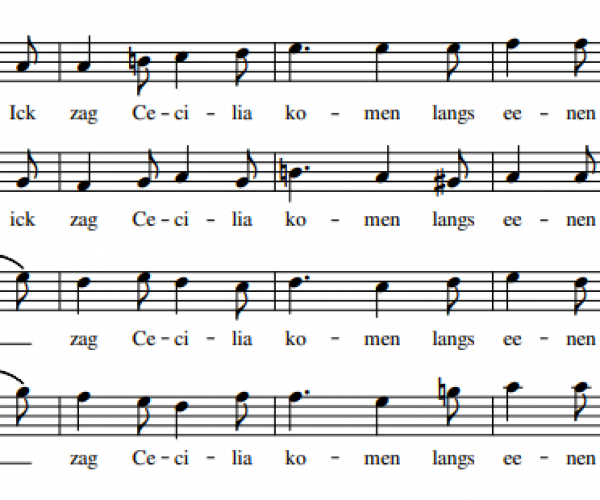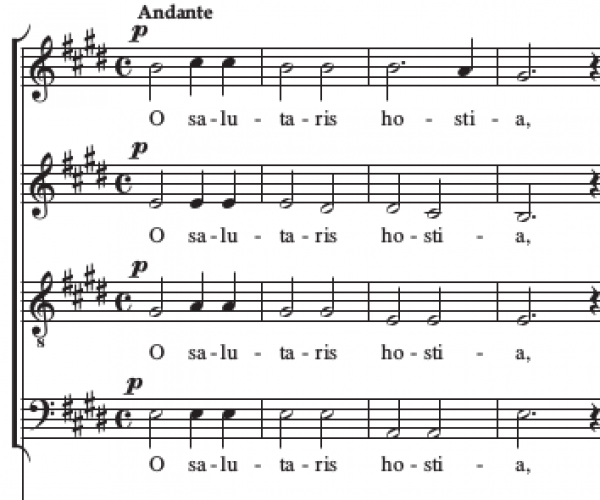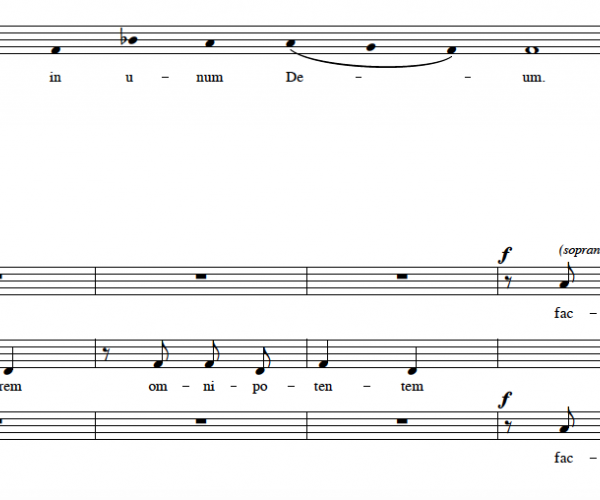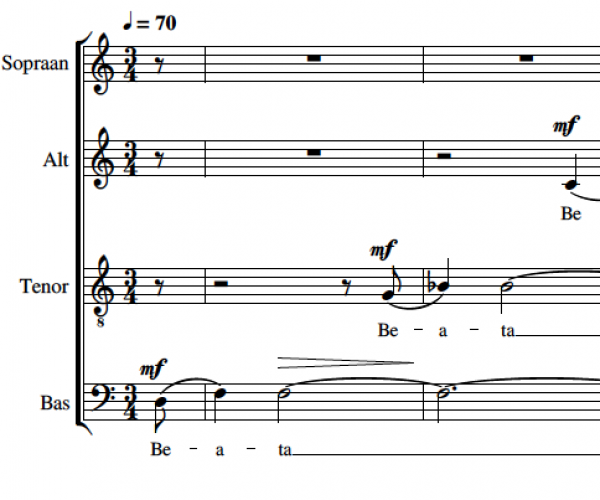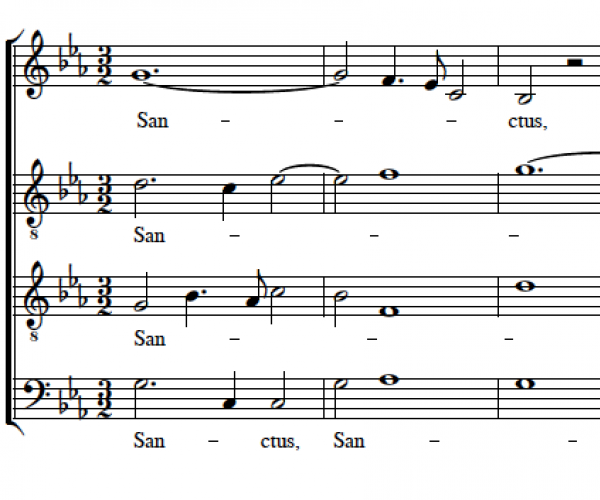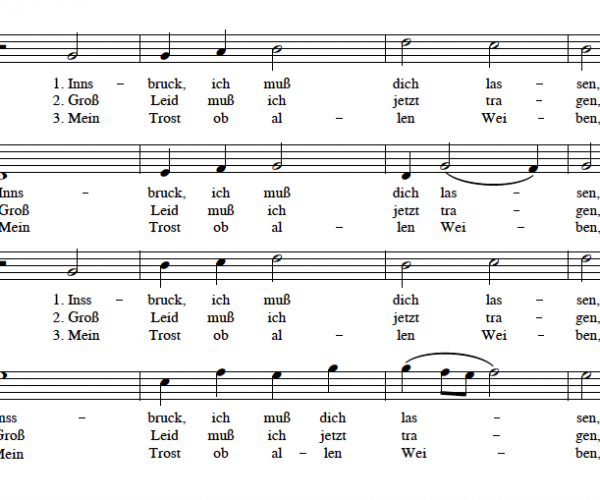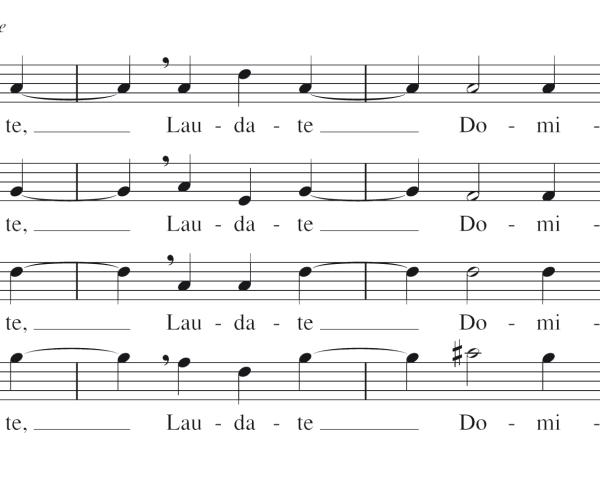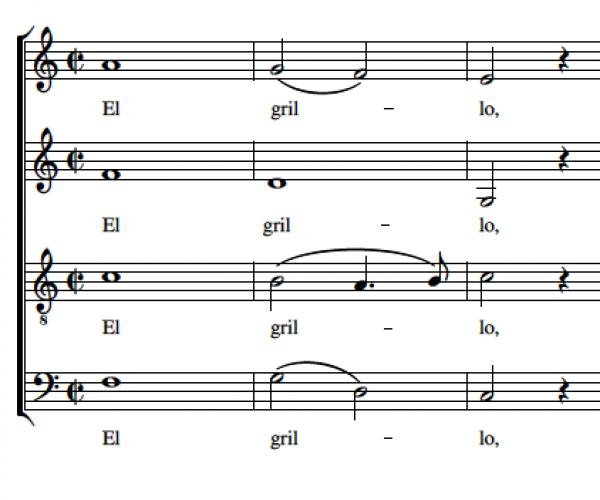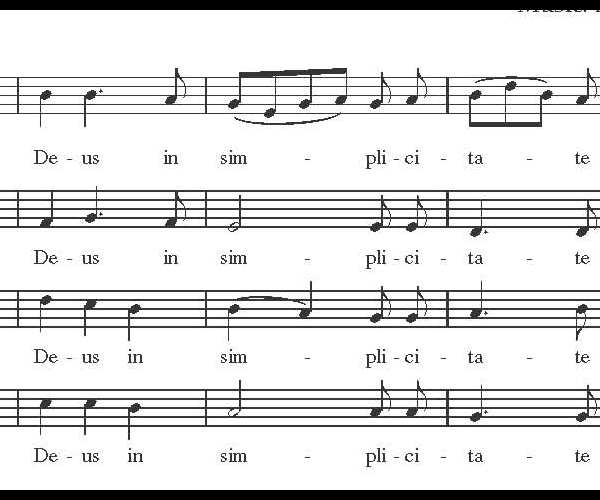Scores
- Adriaan Willaert (1)
- August De Boeck (1)
- Carl Van Eyndhoven (2)
- Chris Dubois (1)
- Frank Agsteribbe (1)
- Heinrich Isaac (1)
- Hubert Waelrant (1)
- Jan Van der Roost (2)
- Johannes Ockeghem (1)
- Josquin Desprez (1)
- Kristiaan Van Ingelgem (1)
- Liesbeth Decrock (2)
- Lieven Duvosel (1)
- Lucien Posman (1)
- Ludo Claesen (1)
- Noor Sommereyns (1)
- Norbert Rosseau (1)
- Orlandus Lassus (1)
- Paul Steegmans (1)
- Paul Schollaert (1)
- Pierre-Hercule Brehy (1)
- Raymond Schroyens (1)
- Roland Coryn (1)
- Sebastiaan van Steenberge (1)
- Stijn Dierckx (2)
- Vic Nees (1)
In 2019, Dubois wrote two arrangements for SATB a cappella of Ik zag Cecilia komen, created by the Geels Vocaal Ensemble conducted by Eva Vermeren during their concert trip to Barcelona. Dubois alternates canonical bits between single voices with full four voices. A short piece with melodic lines and surprising harmony.
O Salutaris Hostia is a simple but very beautiful four-part work that appeared with the Koor&Stem magazine Stemband in September 2011.
Norbert Rosseau wrote about six masses. This Missa in honorem spiritus sancti is dedicated to Noel Van Wambeke and Pros Goethals, the conductors of the cathedral choir in Ghent. This work is in Latin, later Rosseau would also write church music for them in Dutch.
Beata viscera was written in 2005 for the choral scores we published with the magazine Stemband of Koor&Stem. It is an easy and appealing composition in which all voices are assigned an interesting line.
This mass has no exact composition date and originated somewhere between 1450 and 1480.
Heinrich Isaac visited Innsbruck at least three times. In September 1484, 1500 and 1501. He therefore also had to leave the city several times. At least two versions of the song are known, for different occasions.
Laudate Dominum by Sebastiaan van Steenberge is a challenge for an amateur choir and a refreshing liturgical work.
El Grillo is typical of a frottola, a simple profane song in Italian and musical ancestor of the madrigal.
Matona mia cara is a warm-blooded, promising and somewhat flat soldier song. Sometimes it is wrongly thought that this is a Maria song, but in reality it is about a soldier trying to seduce a beautiful lady.
With Domine Deus in simplicitate, Ludo Claesen takes us to Gregorian chant. The beginning of the composition refers to the original melody of the Gregorian hymn. Claesen does not literally copy the melody line, but retains the idea behind the practice: the melismatic singing or in other words, the singing of several notes on a syllable.
Pages
Register for our newsletter
We keep you informed 4 times a year about repertoire news, info about Flemish composers, new acquisitions in our library, webshop or freely downloadable scores on Koorklank

